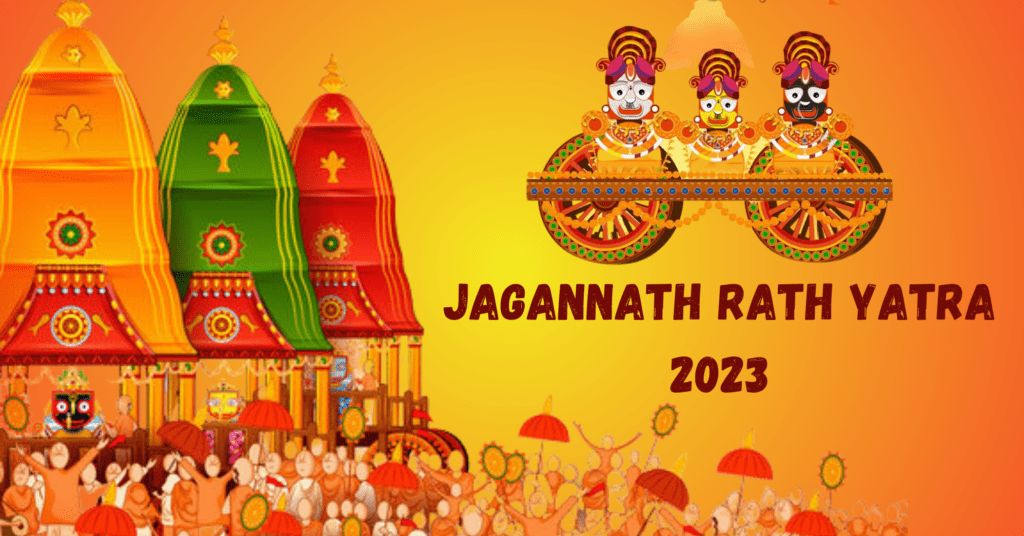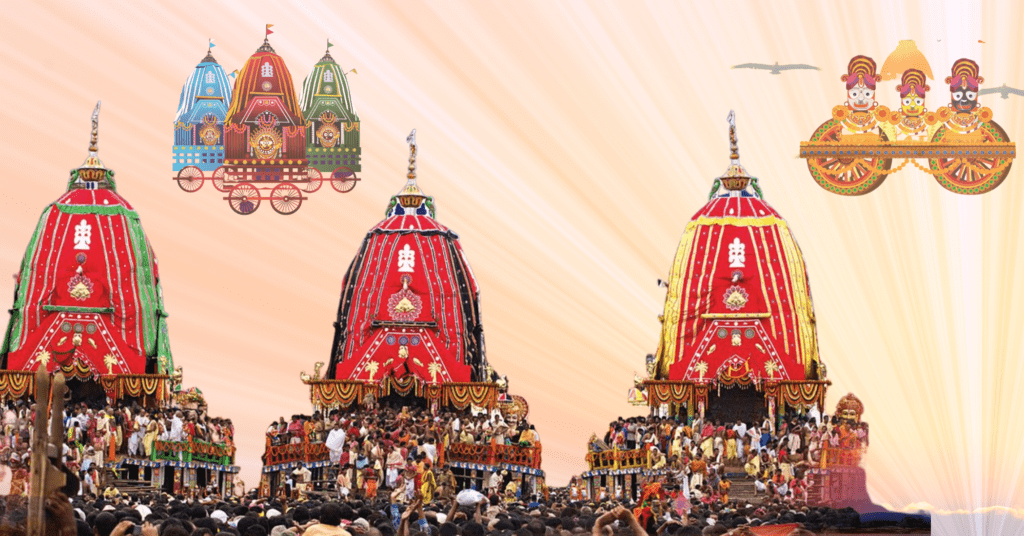Jagannath Temple, Mystery and History, Puri
The How, Why and When of Jagannath Rath Yatra 2023
Jagannath Rath Yatra: History, Significance, and Celebrations
Jagannath Rath Yatra is an auspicious Hindu festival. Understanding the how why and when of Jagannath Rath Yatra is as important as celebrating the festival. It involves the grand procession on beautifully decorated chariots, commonly known as the Rath Yatra, of Lord Jagannath, along with his siblings, Lord Balabhadra (Balram) and Goddess Subhadra.
Read this blog post to learn about the history, significance, and story behind Jagannath Rath Yatra.
History of Jagannath Rath Yatra
The history of Jagannath Rath Yatra dates back to ancient times. It is generally believed that the Rath Yatra must have started in the 12th century. Sri Chaitanya Mahaprabhu, a great saint who lived around those times, is widely credited for popularizing the festival. Especially in the region, which is the present-day state of Odisha.
But the celebrations in the form of Rath Yatra are different from the worship of Lord Jagannath. Lord Jagannath has been worshiped since ancient times, and the worship in Puri dates back thousands of years.
Significance of Jagannath Rath Yatra
Jagannath Rath Yatra has immense significance in Hindu mythology and the devotees. The festival is celebrated by people from all walks of life. Irrespective of caste, creed, or social status, people participate in the festival with equal enthusiasm and joy, thus symbolizing unity in the diversity phenomenon of India.
The belief in the Yatra and the festival is such that people believe that, anyone who pulls the chariot during the procession or the Yatra gets cleansed of their sins and attains salvation. Therefore, all the devotees, which are huge in number, celebrate with complete fervor and devotion showing their deepest love for Lord Jagannath.
The Jagannath Rath Yatra is a highly auspicious festival. People arrive in huge numbers to witness the Rath Yatra and get a glimpse of their favorite Lord Jagannath with Lord Balabhadra and Goddess Subhadra. It is believed that being a part of the procession (~ Yatra) brings blessings and good fortune.
Story Behind Jagannath Rath Yatra
According to the Hindu mythology, Jagannath is none other than Lord Krishna. He was an incarnation of Lord Krishna who wanted again to visit his birthplace, Mathura.
As per the Jagannath Rath Yatra story, Lord Jagannath, along with his siblings Lord Balabhadra and Goddess Subhadra, go to their aunt’s temple. It is the famous Gundica temple, approximately three kilometers away from the main Jagannath Temple located in Puri. That is why on every Rath Yatra, Lord Jagannath, Lord Balabhadra, and Goddess Subhadra are first taken to their aunt’s temple, and after a week, they are brought back to the Jagannath Temple.
Celebrations and Rituals
Having understood the significance of the Jagannath Rath Yatra, the preparations for the Rath Yatra start in advance. The festival is celebrated on the second day of the lunar calendar month of Ashadha. This day generally falls in June or July month.
The preparation of the festival mainly starts with the construction of the chariot. Three chariots for the Jagannath Rath Yatra, one for Lord Balabhadra, one for Goddess Subhadra, and one for Lord Jagannath himself are meticulously made using fine wood, ropes, and many other materials.
Each of the three Rathas is known by a different name. Lord Balabhadra’s rath name is Tala Dhwaja, and the name of Subhadra Rath is Darpandalana Rath. The name of the rath of Lord Jagannath is Nandighosh/Garudadhwaja/Kapidhwaja.
Following the tradition, the Gajapati King of Puri (recognized only as per tradition) sweeps the chariots with a golden broom and sprinkles water and sandalwood paste symbolizing humility and devotion.
On the day of the Rath Yatra, devotees gather in huge numbers to witness, participate and enjoy the festival and get the opportunity to show their devotion by pulling the chariots. The Yatra moves slowly through the streets of Puri, followed by chants, devotional songs, and dance performances.
Generally, Lord Jagannath, Lord Balabhadra, and Goddess Subhadra stay for a week at the Gundicha temple. Then return to the main Jagannath Temple in a similar grand procession known as Bahuda Yatra.
When is Jagannath Rath Yatra 2023, you ask? This year, i.e., in 2023, the Jagannath Yatra is to take place on 20th June 2023. Millions of followers and devotees are expected to arrive at the Yatra.
In Summary
Jagannath Rath Yatra is a very auspicious procession and a festival filled with devotion and faith. The significance of the Jagannath Rath Yatra is embodied in its history and the reason why Jagannath Rath Yatra is celebrated. It is a diving journey of Lord Jagannath, encasing the values of unity, devotion, and spirituality in the devotees. Being present on the occasion of the Yatra in Puri and being part of the celebrations is said to bring blessings and divine grace to all who are a part of it.
For all your puja needs CLICK HERE!
Frequently Asked Questions
- What is the historical significance of Rath Yatra?
Ans: Historically, Rath Yatra is said to be popularized by the great saint Shri Chaitanya Mahaprabhu. As per the Hindu mythological legend, Lord Jagannath, an incarnation of Lord Krishna, along with his siblings, Lord Balabhadra and Goddess Subhadra, set out on a journey to meet their aunt at Gundicha temple and stay there for a week only to return with a similar large procession known as Bahuda Yatra.
- What is the story behind Jagannath Temple Rath Yatra?
Ans: The Jagannath Temple Rath Yatra signifies the journey of Lord Jagannath, who is the incarnation of Lord Krishna and took this form to return to his birthplace Mathura. The procession is important and celebrated because the Gods and Goddesses come to the temple amongst the people for some time as they travel to Gundicha Temple to meet their aunt and stay there for a week.
- What is the importance of Rath Yatra in India?
Ans: Jagannath Rath Yatra is one of the most auspicious and highly celebrated festivals. As per the Hindu mythology, Lord Jagannath, the prime deity of Jagannath temple, along with his brother Lord Balabhadra and Goddess Subhadra, come out into the public as they travel to their aunt’s place at Gundicha temple. It is approximately three kilometers away. The importance that God himself has come out to bless their devotees is widely regarded and highly accepted. The blessings and freeing from sins signify the importance of the Rath Yatra.
Connect with your faith and devotion using our exclusive, and customized Puja Services CLICK HERE!





